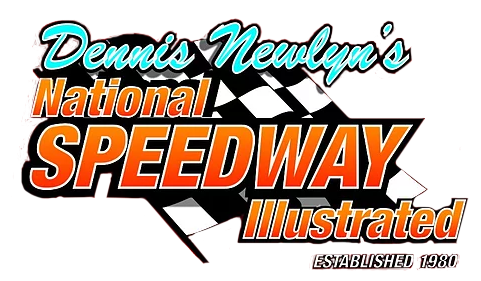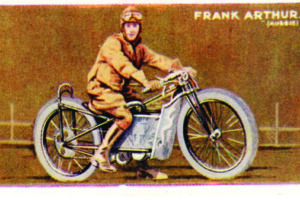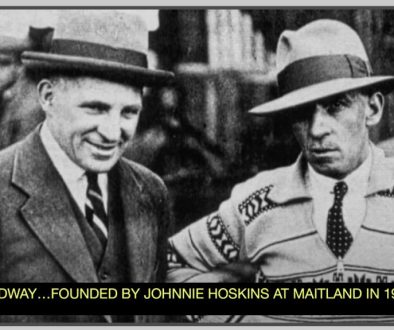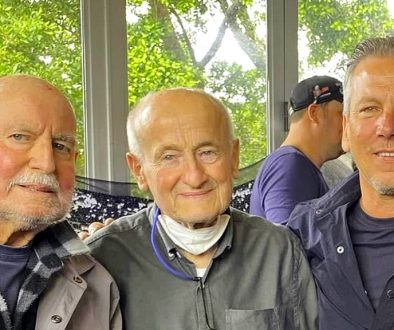A SPEEDWAY DYNASTY BORN IN LISMORE
Lismore rightly takes a proud place with its contribution to Australian speedway history through its greatest eras. It may not be widely known, the popular northern New South Wales city is the birthplace of a man by the name of Harold Frank Milton Arthur who was born on December 12, 1908. He later became better known in the world of speedway as Frank Arthur, initially as an Australian Test rider and in later life as one of the greatest speedway promoters of all time after he served for many years as Director of the world famous Empire Speedway Pty Ltd.
This company was literally an empire as it promoted the sport for over 45 years – a company that at the peak of its powers dominated the sport after it was formed in 1934 with Arthur, speedway’s “inventor” Johnnie S Hoskins and Bert Pryor as its directors.
Arthur was a driving force behind the establishment of the company as he set it on a path to stardom, equal in status to some of the world’s leading bike riders and car drivers he imported in following decades.
His company at one time ran the Sydney Showground and Sports Ground venues, the Brisbane Exhibition Ground Speedway and in later years the former Toowoomba Showground. In 1965, a huge one-mile track was established in Brisbane, fittingly named Arthur Park, though the existence of the Acacia Ridge circuit did not remain in operation as long as Empire’s other famous venues. Frank Arthur spent his very early years in Lismore before the family moved to Queensland.
That’s also where his speedway riding career commenced in the late twenties when he raced at the AJ Hunting promoted Brisbane Ekka. Arthur quickly established himself as a top rider and shared star billing with other Aussie swashbuckling heroes Billy Lamont and Vic Huxley.
The Sydney Showground opened for speedway in 1926 and the incredible emergence of the sport later spread to England after Hunting took a band of riders from Australia to introduce cinder track racing there in 1928. Arthur was among the group who trailed a blaze of glory throughout England. He ultimately won two British Championships, enjoyed success in the Golden Helmet events and was a genuine star at international level in following years. By now Arthur was so deeply entrenched in the sport he could see a business opportunity lurking in the future.
The money he earned was massive and he did not spend foolishly. He safeguarded his earnings. He was a Test Match captain for Australia and also raced in a team under his leadership known as “Arthur’s Tigers. He retired from racing here and in England in 1934. Right there and then he was on the brink of further greatness, this time as a promoter. He made an unsuccessful attempt to promote speedway in America at his first serious assault, but it was in stark contrast to the outstanding promotional successes he achieved in later decades under the Empire Speedway Pty Ltd promotional banner.
In 1935 Arthur was instrumental in bringing to Australia a bike Test team from England and introduced Tests between the two nations on Aussie soil. The Tests were a raging success for the next three decades. He also introduced to Australia British Speedcar drivers and played a role in taking the division to future stardom in Australia. American Speedcar imports also came to this country and raced for Empire Speedway Pty Ltd.
He served in World War II and was mobilised in the Militia on January 13, 1941. He was commissioned acting lieutenant the following year before he served in Australia as a transport instructor until November, 1945. Upon release he was back in the speedway promoting business. As a promoter, Arthur shaped Australian speedway’s formative years and revived it after World War II when he imported two-wheel and four-wheel speedway stars and resurrected the motorcycle Tests. His last major contribution to local speedway was his launch of stock car racing at the Sydney Showground during the 1954-55 season. Involved in promoting the Brisbane Exhibition Speedway from 1946 until 1969, he commuted from his home in Sydney. Arthur was also a successful racehorse-owner who joined several syndicates and was a prominent member of Tattersall’s Club, Brisbane. He lived in Sydney’s Dover Eights eastern suburb, where he died of a coronary occlusion on September 11, 1972. He was married and he and his wife Edna raised four daughters. His great years in speedway had its beginning in Lismore as the late, great Frank Arthur can rightly claim to being one of local speedway’s most famous citizens.









WOFFINDEN WANTS TO RACE AT CARDIFF